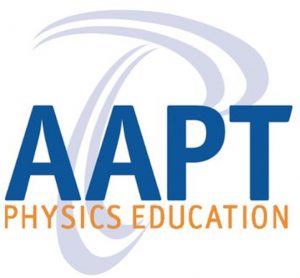The American Association of Physics Teachers
Founded almost 90 years ago, the American Association of Physics Teachers (AAPT) is a professional society dedicated to the pursuit of excellence in physics education. The Association represents a diverse network of educators who all learn from each other about the most effective ways to teach physics, to reach all students. In this exclusive interview, we speak with AAPT’s President Professor Mel Sabella, who tells us about AAPT’s varied activities and goals. He also explains how the Association focuses on diversity, equity and inclusion to greatly enhance physics education in the US and further afield.
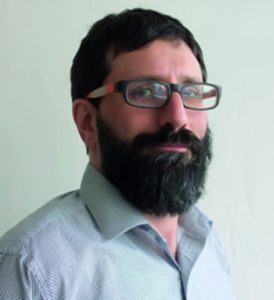 To begin, please tell us a little bit about the history of AAPT. Why and when was the Association established?
To begin, please tell us a little bit about the history of AAPT. Why and when was the Association established?
AAPT was established in 1930 with the goal of being the leading voice in the ‘dissemination of knowledge of physics, particularly by way of teaching’. Homer L. Dodge, the first president of the AAPT and one of the co-founders of the organisation, emphasised the importance of community and recognised that physics teachers often ‘had no means of intercommunication’.
Fostering community remains an important role for our organisation, and although the world is much more connected than it has been in the past, we often find physics teachers who suffer from different types of isolation. They may be the only physics teacher in their high school, they may be the only physics faculty member at their institution interested in active learning, they may be physics teachers from an underrepresented group in a field that suffers from a lack of diversity. Supporting our diverse network and fostering a community of educators, who share similar values and goals, remains an important part of our mission.
AAPT’s first national meeting was held in New Orleans in 1931 with the American Physical Society and the American Association for the Advancement of Science. Many of the topics, such as laboratories and apparatus, discussed at the first AAPT meeting, over 75 years ago, are still being discussed by our membership today, although, as you would expect, the details of these discussions have evolved quite a bit.
Shortly after this first meeting, AAPT began its journal program which now includes The Physics Teacher and the American Journal of Physics. As the world changes and physics education adapts to changing demographics, changing technology, and changing workforce needs, AAPT changes to reflect the values and interests of our membership. You can see this evolution in our journals, at our conferences, and in our programs and activities.
For instance, diversity, equity, and inclusion have become a cornerstone of AAPT’s work in recent years, with many in our membership thinking about the best ways to create effective physics classrooms for all. Two examples from recent national meetings are sessions on ‘Reducing the Gender Gap in Undergraduate Physics’ and ‘The Model Minority Myth and Disaggregation of Asian Student Data’. Another excellent example of this effort comes from a recent themed issue of The Physics Teacher that focused on Race and Physics Teaching. This theme issue brought together physics educators to think critically about the role race, gender, and culture play in the physics classroom.
While AAPTs mission and values have remained the same and the organisation remains committed to being ‘a professional membership association of scientists dedicated to enhancing the understanding and appreciation of physics through teaching’, the way we accomplish this has changed significantly from the early days of the organisation.

How many physics teachers (and therefore students) currently benefit from AAPT’s work?
There are roughly six thousand members of AAPT around the world, but the impact and benefits extend well beyond our membership, as students in classes taught by AAPT members benefit from innovative, active, research-based instructional materials. When you think about the impact the organisation has had and continues to have on physics teaching, it’s quite impressive. This impact extends well beyond the United States, as roughly 14% of our members are international, and many of our international members regularly attend the national meetings and play leadership roles in the organisation, serving on area committees and organising sessions.
AAPT is quite diverse with K-8, High School, Two Year College, Four Year College and University members. Student membership includes both undergraduate and graduate students with the majority of graduate student members in the field of Physics Education Research. It’s amazing to part of such a diverse community where the expertise of educators at all levels is valued and leveraged.
Because of this diversity in our membership, our organisation has this amazing breadth of expertise and experience. You always have access to a welcoming community focused on the specific topic that you are interested in. For instance, If you are interested in improving the laboratory experience for your students you can connect to our affiliate organisation, ALPhA; if you are interested in supporting students underrepresented in physics you can connect to our Committee on Diversity in Physics; if you are teaching physics in your High School for the first time you can connect to the Physics Teaching Resource Agents. These are just a sample of the breadth of work in our organisation.
How do you engage with physics teachers across the country and encourage them to collaborate with you?
There are many ways that our membership engages with the organisation and the way we foster collaborations is through offering high-quality instructional resources and supporting the implementation of these materials through peer-reviewed journal articles, workshops, and national meetings. Many in the organisation, in addition to running workshops at the national level, run regional workshops, through the AAPT Sections, to provide access in different areas of the country. With less and less funds for professional development, it is important that AAPT has programs and activities to support membership who cannot always travel to a national meeting. As our national meetings move around the country, we always include special opportunities for local students and teachers.
Our K-12 Teachers’ Day and Two Year College (TYC) Day, which have a deeply discounted registration, offer focused programming for these specific populations and are designed to provide access to AAPT resources to the local community. The reduced registration and small travel costs for the local community make attending one of our national meetings possible for those without significant funding.
In addition, the Society of Physics Students, one of AAPT’s sister societies, organises a hands-on, interactive session with local students at each of our Winter meetings called Students Exploring Engineering and Science. AAPT provides lunch, transportation, career information, and science materials so these students experience an exciting day of physics.
Our members also collaborate with the organisation by engaging in leadership roles and many of our members choose to join one of our 19 Area Committees that focus on topics of interest to the physics and physics education communities. These committees tackle big picture issues in physics education, inform our strategic planning, and develop amazing sessions and workshops for our national meetings. These opportunities in leadership mean that any member of AAPT can contribute to the national dialogue around physics education and help guide the direction of the organisation.
‘It’s amazing to part of such a diverse community where the expertise of educators at all levels is valued and leveraged.’

How do you establish the efficacy of different approaches to teaching physics, and how do you encourage teachers to adopt such new and more effective strategies?
Developing new, effective instructional approaches to physics teaching is a central goal of our organisation. The overarching characteristic of these approaches is active engagement, based on what we know works best for students. There is a wealth of compelling evidence that instructional materials that are inquiry- and research-based result in larger gains in content understanding, as well as improved attitudes and expectations, when compared to the traditional lecture-based physics course.
The Physics Education Research community within AAPT has done significant work in establishing the efficacy of different instructional materials through both qualitative and quantitative research studies. This community consists of students, post docs, and faculty who take a scholarly approach to instruction and learning. When the field started, it mainly focused on studying content understanding and often involved analysis of interviews with students on different physics topics, analysis of written responses on exams, and analysis of research-based, validated diagnostic instruments.
The development of a number of research-based curricula came out of this work, and while these materials emphasised active engagement, they also emphasised the importance of asking the right questions based on data on student learning. Two examples from this work that are still used widely today include Tutorials in Introductory Physics (focused on the college classroom) and Modeling Instruction (focused on the high-school classroom). But these are just two examples – you can find many more exemplary physics instructional materials on the AAPT website and on the AAPT PhysPort site.
Physics Education Research has evolved and diversified since it started and now includes topics such as developing inclusive classrooms, student epistemology, attitudes and expectations, self-efficacy and mindset, laboratory instruction, mathematical reasoning, and computational understanding. The Physics Education Research community holds a tandem meeting, PERC, at the end of each AAPT Summer Meeting that tackles important issues in Physics Education from diversity and inclusion to physics outside of the classroom.

Please tell us about the other resources that you provide for physics teachers, and how you help teachers to derive the most benefit from them.
AAPT and its members have a great deal of expertise on many topics and many of our members have and continue to contribute different types of resources to support teachers at all levels. One great resource for many of these materials is the ComPADRE Digital Library. This is a great site to find resources for K-12 and College classrooms.
For instance, on the Physics Front, in the K-12 resources, you can find an activity where students can integrate physics and biology through a high school diffraction lab that supports students in modelling the work of Rosalind Franklin in discovering the structure of DNA. In the college resources you can find the excellent work of the Partnership for Integration of Computation into Undergraduate Physics – a vibrant community of educators that organises a forum for open discussion, hosts collections of educational resources, strategies and tactics that support the development and improvement of undergraduate physics education through the integration of computation. These two examples just scratch the surface of what one can find in ComPADRE.
Another great resource is the AAPT K-12 Portal. Physics teachers who visit the K-12 Portal will find a wealth of information specifically designed for K-12 educators. For instance, K-12 teachers can read the AAPT report on how physics and physics education connect with the Next Generation Science Standards, or they can check out the collection of Digi Kits, which are hands-on, inquiry-driven activities that support student and teacher learning.
AAPT continues to develop more expertise in Policy and Advocacy work and has worked closely with the American Institute of Physics to strengthen these efforts. One great example of this effort, also on the K-12 Portal, is the Physics Master Teacher Leader Program, which recognises the role and expertise of teacher leadership and its potential for making major impacts on science education at the state and national level.
AAPT is also involved in a number of resources and programs that directly connect to students such as our work with the US Olympiad, the PhysicsBowl and the HS Photo Context. Each year, AAPT hosts a competition for high school students to represent the United States at the International Physics Olympiad Competition. The Olympiad is a nine-day international competition involving more than 60 nations. The PhysicsBowl is a contest for high school students that began in 1985, has always excited students and provides a great venue for students to review and test their physics knowledge. Photos of amazing physics phenomena always excite me and I always look forward to getting my calendar with the AAPT High School Photo Contest winners’ pictures. These pictures are an excellent example of how creativity, physics and art can complement each other and excite both scientists and non-scientists, who each bring a unique perspective when viewing these photos.
I really appreciate your question about how we help teachers derive the most benefit from these resources. I really think this highlights the importance of membership in a professional society and being part of a community. While Digi Kits are great, it is important to engage in workshops on how best to implement them and connect to a community where you can co-think and problem solve around effective strategies for implementation and sustainability. It’s so much more enjoyable, effective, and impactful when you are part of a learning community that shares common values and goals.
So, I think the AAPT best supports members in utilising these resources by supporting connections within our community – this might mean engaging in workshops at national meetings, being part of our mentoring and alliance programs, having access to journal articles about a particular topic you are teaching, or connecting to an online learning community that is trying out the same instructional materials that you are trying. Effective teaching is incredibly challenging and it’s important to have the support of a community.
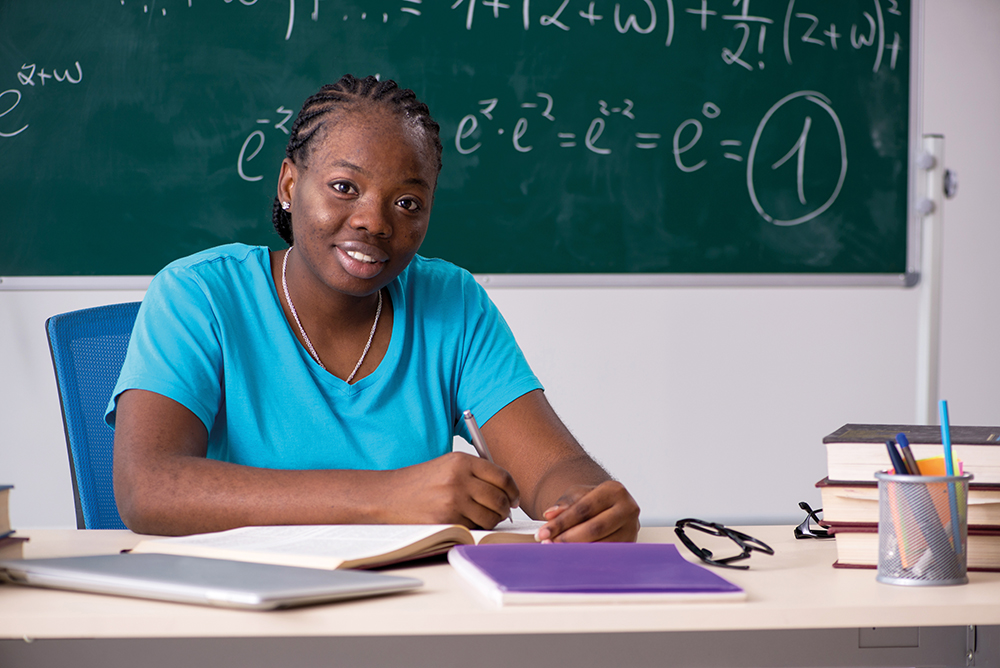
Unfortunately, women continue to be severely underrepresented in physics, which is not only an equity issue, but also means that there is an untapped talent pool that could help in solving scientific challenges. What initiatives are AAPT involved in to increase the proportion of women who study and pursue careers in physics?
This is a major concern in the physics community and it’s important that we push back on the common narrative that physicists are judged solely on their physics. We need to recognise that there is always bias and we need to acknowledge that the culture of physics is not always friendly. We also need to understand and value the contributions to science and physics from diverse communities. It’s concerning that, although the number of women earning physics bachelor’s degrees has increased over the last decade, the percentage of women earning these degrees has not increased.
As you mention, physics benefits greatly from diversity in who has access to physics and who does physics. We know that the physics and the physics education community benefit from diversity, but as we think about diversity in the field, we also need to think about inclusivity. If we don’t create programs, classrooms and instruction that value all and invite all to participate then we won’t be able to increase and sustain diversity in the field. To create these inclusive classrooms, physics educators need to understand the variety of obstacles that can impede success for women and underrepresented groups in physics, such as implicit bias and stereotype threat, and need to know how to hold members of our community accountable for actions that stifle the development of inclusive spaces. In a recent study that surveyed undergraduate female identifying physicists that participated in the annual Conference on Undergraduate Women in Physics, about 75% of those surveyed indicated that they experienced some form of sexual harassment during their academic career.
AAPT has a number of programs in place to support women in Physics. Two examples, that AAPT is a part of, are the eAlliances and the StepUp4Women projects. eAlliances is a National Science Foundation sponsored project that provides faculty development for women physics faculty and creates a peer-mentoring alliance with women who share similar values and experiences. The goal of StepUp4Women, also funded by the National Science Foundation, is to mobilise a large number of high school physics teachers to attract and recruit female students to physics-related careers using research-informed and field-tested classroom practice that improve female students’ physics identity. Both these projects, focused on the college and high school level, respectively, are powerful ways we can support women in physics.
At the international level, AAPT has played a leadership role in the International Conference on Women in Physics, led by the International Union of Pure and Applied Physics. A number of AAPT members including our Executive Officer and current President Elect served on the US Delegation to the Sixth International Conference. This conference has resulted in a number of resources such as conference proceedings, HERStories which highlights female identifying physicists from around the world sharing personal knowledge and encouragement and also includes lesson plans, and the Gender Bias in Physics Forum which provides a space where women and people who are gender and sexual minorities can share experiences of gender and sexuality bias in physics, find resources, and report responses to bias.
These are broad collaborative efforts among many different people and professional societies. This is not work that professional societies can do alone – it’s work that requires all hands on deck. AAPT recently joined the Societies Consortium on Sexual Harassment in STEMM which involves over 100 societies in science, technology, engineering, mathematics and medicine (STEMM). This is an excellent example of how societies can join forces to make STEMM a more welcoming place.
Many of the programs I described, such as the Societies Consortium on Sexual Harassment in STEMM, work toward changing culture and existing structures. It’s problematic to encourage diversity in a culture that can be toxic to specific members of our community. This highlights the importance of thinking about diversity, equity, and inclusion together.
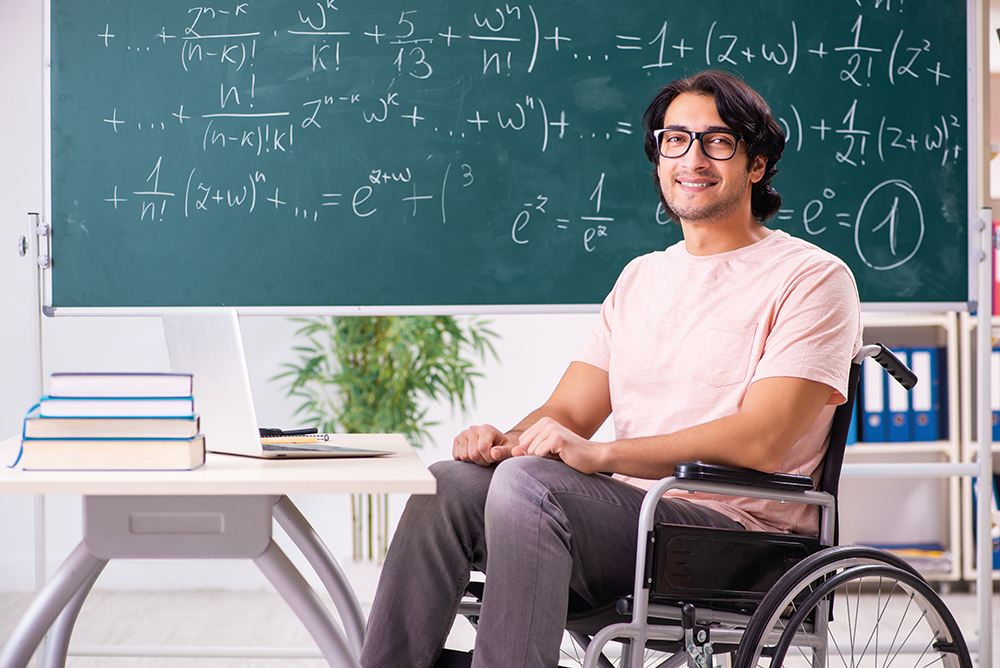
As well as increasing female participation in physics, how are you working to achieve greater cultural, racial, sexual, socioeconomic and ability diversity, amongst both physics teachers and students? Describe one or two of your success stories.
AAPT recently released a policy statement on the importance of fostering safe and inclusive classrooms. This statement emphasises that ‘there is abundant evidence that a hostile environment places burdens and impedes success, disproportionately affecting those marginalised because of their identities. These communities include, people of colour, women, LGBTQIA individuals, those differently abled and those from lower socioeconomic backgrounds. The threat increases significantly for those with multiple historically excluded identities.’ Supporting diversity, equity, and inclusion is one of four goals in AAPT’s new strategic plan – it is a goal that is a top priority for our membership, our staff, and our Board of Directors.
In 2016, in the case of Fisher v. University of Texas, Chief Justice Roberts asked, ‘What unique perspective does a minority student bring to a physics class? I’m just wondering what the benefits of diversity are in that situation?’ The AAPT Committee on Diversity in Physics offered a powerful response to this question and affirmed the following: (1) Racism and sexism exist in physics and physics education; (2) Homogeneity in physics is the by-product of racism and sexism; (3) Affirmative action is an important countermeasure to institutional racism and sexism in physics; (4) Making physics more inclusive and supportive of women and people of colour is important and necessary for doing the best possible physics; (5) Increasing diversity is a matter of justice; and (6) Women and people of colour do not need to justify their presence in physics classrooms.
We have made a number of efforts in our community to foster inclusive spaces in Physics, whether it is at our national meetings or in the classrooms of our members. For instance, at our meetings we always have an LGBTQ meetup that is free and open to all. This is an opportunity for members of the LGBTQ community to have a safe open space to gather. At our recent meetings we have provided membership with free workshops throughout the meeting that focus on topics such as implicit bias, active bystander intervention, ally skills training, and racial microaggressions. These sessions have been well attended and membership has indicated that they greatly value opportunities to engage in these difficult discussions. We are also seeing that the number of sessions that focus on diversity, equity, and inclusion at our meetings has grown significantly and attendance at many of these sessions is often standing room only.
Our national meetings that occur in the winter and summer are one of the most valuable aspects of AAPT membership. This is often the place where physics educators learn about the cutting-edge efforts in instructional reform, it’s a place where practitioners can engage in interactive workshops, it’s the place to hear internationally renowned plenary speakers, and it’s the place to develop community and network. Because of this, it’s important to make sure these meetings are accessible to as many members as possible.
While our K-12 and Two Year College Day provide access to local educators, we also have funds to support travel for our diverse membership who sometimes have less funding resources or are juggling family commitments. Dependent Care and Disability Grants can be used to cover childcare costs and elder-care costs, as well as provide support to our members with disabilities to bring a caretaker to a national meeting or otherwise support their needs.
Our Special Projects and Philanthropy Committee has a dedicated fund to support travel for high school and TYC faculty who are from underrepresented groups or from institutions whose students are predominantly underrepresented. Both these funds help take some of the financial burden off traveling to the national meetings and help our membership not have to choose between family responsibilities and integration with their professional community.
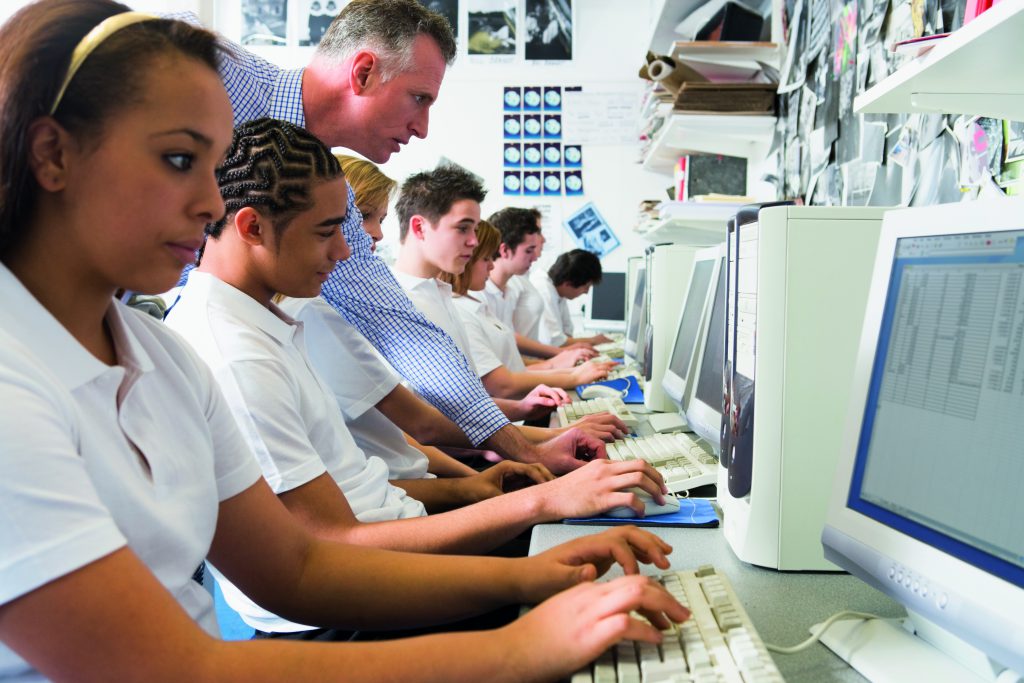
Climate change and other forms of environmental degradation are perhaps the greatest challenges facing humanity, and today’s science students will be key in building a sustainable future. Please tell us about how you are helping to prepare and encourage today’s physics students in this regard.
Our membership is quite interested in this topic and in our recent meetings we have had a number of sessions and plenary speakers who have tackled the science of climate change and environmental challenges, as well as discussed best practices on how you might bring this topic into a classroom.
One great example is the work of our Committee on Physics in Two Year Colleges who organised a session at our San Diego meeting on climate change that involved speakers talking about clouds in a changing climate, evidence for global temperature change, and building climate intuition through classroom demonstrations. Our plenary at that meeting was Lynne Talley, a Distinguished Professor of Physical Oceanography in the Climate, Atmospheric Sciences, and Physical Oceanography division at Scripps Institution of Oceanography.
At the following meeting we had David W. Cash as our plenary. He is the Dean of the John W. McCormack Graduate School of Policy and Global Studies at UMass Boston and a founding Dean of the Sustainable Solutions Lab. In his talk, he focused on how science, scientific research, the science-policy interface, science education and scientific literacy are ‘being defined, re-defined, re-cast, transformed, re-imagined, and re-conceived’. He spent much of his talk focusing on the work of the Environmental Protection Agency and the ‘turbulent world we as science educators and practitioners find ourselves in’.
AAPT is a society partner in a Project Kaleidoscope Project focusing on better preparing students to relate to real-world issues such as energy, air and water quality, and climate change. This project has resulted in interesting resources on sustainability and the connection to physics. The topic of climate change is especially exciting because, in addition to being a contemporary issue, it also brings in a diverse set of disciplines. Incorporating interdisciplinary work into STEM instruction is a challenging, crucial direction we need to focus more resources on. AAPT has just launched a new books program and we would love to have contributions on how best we can bridge climate and environmental science to physics through interactive, research-based instructional materials.
We are finding that the world is changing rapidly: scientifically, technologically, and politically. It’s crucial for professional societies, such as AAPT, to stay informed of these trends, listen and respect the views of our members, and provide essential information and resources to support our diverse communities of educators in navigating the always-changing instructional landscape. The best way to navigate this is through a community that shares similar values.
When you look at the diverse variety of AAPT activities, you see that the value in the organisation comes from its members, their expertise, and their service to their students and the broad community of physics educators. The ways in which AAPT supports our mission to ‘enhance the understanding and appreciation of physics through teaching’, continue to evolve as the organisation changes and the world changes.
Reference
https://doi.org/10.33548/SCIENTIA370
Creative Commons Licence
(CC BY 4.0)
This work is licensed under a Creative Commons Attribution 4.0 International License. 
What does this mean?
Share: You can copy and redistribute the material in any medium or format
Adapt: You can change, and build upon the material for any purpose, even commercially.
Credit: You must give appropriate credit, provide a link to the license, and indicate if changes were made.
More articles you may like
Grandmothers: Innovation Through Tradition
Grandmother Project – Change through Culture (GMP) is an organisation dedicated to documenting the role of grandmothers and demonstrating the effectiveness of grandmother-inclusive strategies in improving the health and well-being of women, children, and adolescents. GMP’s groundbreaking work challenges conventional wisdom to transform community-based interventions in Africa and beyond, harnessing a powerful but often overlooked resource: the wisdom and influence of grandmothers.
Dr Robert Larkin | Cultivating Change to Improve Soil Health and Increase Potato Yield
Environmental quality and food production are facing the pressing challenges of climate change and global population growth. Dr Robert Larkin from the United States Department of Agriculture-Agricultural Research Service (USDA-ARS) and a team of plant scientists developed and tested a range of crop management systems to help overcome these compounding challenges. Their work is improving soil health and increasing the yield of potato crops, contributing to the future food security of nations.
Professor Giorgio Buttazzo | Artificial Intelligence and a Crossroads for Humanity
Where do we stand with artificial intelligence? Might machines take over our jobs? Can machines become conscious? Might we be harmed by robots? What is the future of humanity? Professor Giorgio Buttazzo of Scuola Superiore Sant’Anna is an expert in artificial intelligence and neural networks. In a recent publication, he provides considered insights into some of the most pressing questions surrounding artificial intelligence and humanity.
Dr Ralf Adam | New Technologies Shaping the Future of Oral Hygiene
Understanding the efficiency of various toothbrush technologies is essential for achieving optimal oral health. Dr Ralf Adam, who leads a dedicated team at Procter & Gamble in Germany, is keen to investigate the complexities of these technologies. His team have provided new insights into the best toothbrush types for plaque removal and the maintenance of gum health. By highlighting the importance of informed oral care decisions and ongoing investigations, this vital research works towards ensuring everyone can achieve a brighter, healthier smile.

